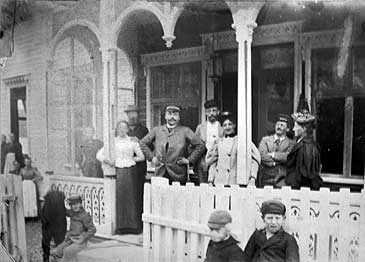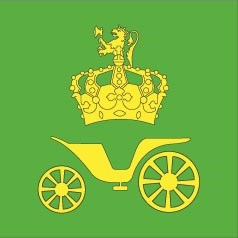Kongevegen - Hegg Traditional Geocache
-
Difficulty:
-

-
Terrain:
-

Size:  (small)
(small)
Please note Use of geocaching.com services is subject to the terms and conditions
in our disclaimer.

Hegg
Cachen er ikkje plassert på vegen eller vegkonstruksjonen.
Eng: The Cache is not placed on the road or the roadconstruction.

 HEGG SKYSSTASJON OG HOTELL Hegg fekk i 1823 kongeleg løyve til å vere skysstasjon og gjestgjevarstad. Her kunne reisande langs Kongevegen få hest og vogn til ferda vidare, eller mat og seng, om dei trong det.
HEGG SKYSSTASJON OG HOTELL Hegg fekk i 1823 kongeleg løyve til å vere skysstasjon og gjestgjevarstad. Her kunne reisande langs Kongevegen få hest og vogn til ferda vidare, eller mat og seng, om dei trong det.
I 1865 vart Hegg såkalla «fast» skysstasjon med offentleg tilskot. Ein fast skysstasjon skulle alltid ha hest og vogn klar. Men dette var truleg ikkje noko problem på Hegg, der dei i 1865 hadde heile ni hestar sysselsette i skysstrafikken.
I siste halvdelen av 1800-talet vart turismen ei stor og aukande næring. På Hegg vart gjestgjevarstaden til hotell, og hotellbygningen vart utvida frå ein til to etasjar. Det nye hotellet fekk staseleg veranda i tidsriktig sveitserstil, og det hadde store, fine stover i første høgda og åtte gjesterom i andre. At mange av gjestene var utanlandske, er illustrert i ei reiseskildring i avisa Aftenposten 11. august 1880:"Jeg traf jo enkelte Turister i Hallingdal, men noget andet var det paa Hæg i Lærdal, her summer Svensk, Dansk, Tysk og Engelsk en om Ørene.»
Ein attraksjon blant dei reisande var fossen på Hegg, som vart eit ynda motiv for dei mange tilreisande kunstnarane.
Då Hegg Hotell vart nedlagt i 1920, vart den fine bygningen flytta og sett opp att som kommunehus for Borgund på Steinklepp, der han står den dag i dag.
Gravhaugen Spenning-Hegg: Hegg var tidlegare ein av dei største gardane i Borgund, og har alltid lege sentralt til langs ferdslevegen. Dei som fòr forbi kunne sjå at det var velstand på garden, for store gravrøyser frå førhistorisk tid låg godt synleg langs vegen. Den største er 15 meter i tverrmål og 2 meter høg. Etter segna er ein mektig bygdehovding, Spenning-Hegg, gravlagd her.
 Då den Bergenske Kongeveg vart bygd på slutten av 1700-talet, fekk ein for fyrste gong køyreveg mellom Aust- og Vestlandet. I dag er den gamle Kongevegen eitt av dei finaste veghistoriske kulturminna vi har. Den 10 mil lange vandreruta Kongevegen over Filefjell tek deg gjennom nokre av dei vakraste landskapa i Noreg. Frå tronge og dramatiske fjordlandskap inst i Sognefjorden, via høgfjellet på Filefjell, og ned i innlandsbygdene i Valdres. Ei reise mellom landsdelane - med den historiske Kongevegen som den raude tråden undervegs. Der vegen er borte nyttar ein andre trasear, slik at det blir ein samanhengande turveg frå Lærdalsøyri til Vang. Syklistar har alternative ruter utanom dei mest sårbare delane av Kongevegen.
Då den Bergenske Kongeveg vart bygd på slutten av 1700-talet, fekk ein for fyrste gong køyreveg mellom Aust- og Vestlandet. I dag er den gamle Kongevegen eitt av dei finaste veghistoriske kulturminna vi har. Den 10 mil lange vandreruta Kongevegen over Filefjell tek deg gjennom nokre av dei vakraste landskapa i Noreg. Frå tronge og dramatiske fjordlandskap inst i Sognefjorden, via høgfjellet på Filefjell, og ned i innlandsbygdene i Valdres. Ei reise mellom landsdelane - med den historiske Kongevegen som den raude tråden undervegs. Der vegen er borte nyttar ein andre trasear, slik at det blir ein samanhengande turveg frå Lærdalsøyri til Vang. Syklistar har alternative ruter utanom dei mest sårbare delane av Kongevegen.

Her ser vi eit følgje med Per Grøthe (med hendene i sida) som skysskar utanfor Hegg Hotell i år 1900.
 HEGG – COACHING INN AND HOTEL - In 1823, Hegg was granted royal licence to operate as a coaching inn and guest house. Travellers along Kongevegen were provided with horse and cart for their onward journey, or, if needed, something to eat and a bed for the night.
HEGG – COACHING INN AND HOTEL - In 1823, Hegg was granted royal licence to operate as a coaching inn and guest house. Travellers along Kongevegen were provided with horse and cart for their onward journey, or, if needed, something to eat and a bed for the night.
In 1865, Hegg became what was known as a “permanent” coaching inn, and was subsidised by the state. At a permanent coaching inn, there should always be a horse and cart ready. This was no problem at Hegg which, in 1865, had as many as nine horses available for this purpose.
During the last half of the 1800s, tourism had become a large and rapidly expanding industry. At Hegg, the guest house was turned into a hotel, and another floor was added to the one-story building. The new hotel was built with an elegant, contemporary Swiss-style veranda, and had large, stylish lounges on the ground floor and eight guest rooms on the first floor. Many of the guests were foreigners, something that is clear from a travelogue published in the newspaper Aftenposten on 11th of August 1880:"I did meet a few tourists in Hallingdal, but Hæg in Lærdal was something else; my ears were buzzing with Swedish, Danish, German and English.”
One of the attractions was the waterfall at Hegg, which was a popular motif for the many visiting artists.
When Hegg Hotell closed down in 1920, the beautiful building was taken down, moved and re-erected at Steinklepp where it was used as municipality offices for Borgund. It is still there today.
Spenning–Hegg: Hegg was one of the largest farms in Borgund, and has always enjoyed a central location along the route. With large burial mounds from prehistoric times clearly visible along the road, it was evident to anyone travelling past that this was a farm belonging to people of great wealth. The largest burial mound is 15 metres across and 2 metres high. According to legend, it is the final resting place of Spenning-Hegg – a powerful village chieftain.
 Bergenske Kongeveg, built at the end of the 1700s, was the first proper road between eastern and western Norway. Today, the old Kongevegen is one of our most beautiful cultural heritage routes. The 100 km Kongevegen across Filefjell walk leads through some of Norway's most spectacular scenery. From the narrow, dramatic fjord landscape innermost in the Sognefjord, via the high mountains at Filefjell, and down to the inland villages in Valdres. A journey from one part of the country to another – linked together by the historic Kongevegen.
Bergenske Kongeveg, built at the end of the 1700s, was the first proper road between eastern and western Norway. Today, the old Kongevegen is one of our most beautiful cultural heritage routes. The 100 km Kongevegen across Filefjell walk leads through some of Norway's most spectacular scenery. From the narrow, dramatic fjord landscape innermost in the Sognefjord, via the high mountains at Filefjell, and down to the inland villages in Valdres. A journey from one part of the country to another – linked together by the historic Kongevegen.
Kilde/Source: Statens vegvesen


Additional Hints
(Decrypt)
Onx fgrva
Rat:Oruvaq fgbar